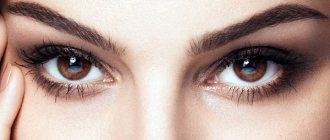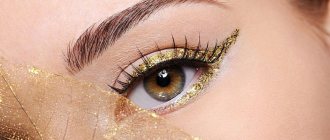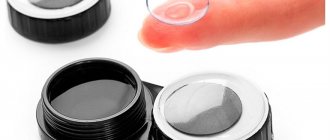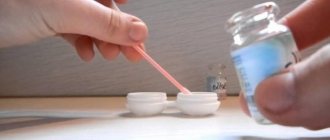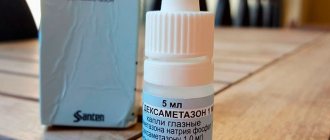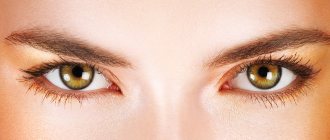What is pepper spray and how does it work?
Pepper spray is an aerosol that contains a chemical compound that irritates the eyes, causing tearing, burning, pain and temporary blindness when sprayed towards the face. The tear agent is used in policing, riot control and self-defense, including defense against wild animals. The effect of the spray on the enemy allows the person in danger to escape, and the police officer to effectively restrain the criminal.
The active ingredient in pepper spray is capsaicin, a chemical derived from the fruit of the cayenne pepper plant, including chili peppers. Capsaicin is extracted from capsicums using an organic solvent such as ethanol. The solvent is then evaporated, and the remaining wax-like resin is oleoresin capsicum (OC), an extract of hot pepper.
Pepper sprays can contain from 0.18 to 3% active ingredient. However, a high percentage of the main ingredient is not always an indicator of potency, since it is not known whether the quality of pepper oil used was high or low. There are six types of capsaicinoids of varying quality. Manufacturers do not specify one variety or another on their products. The most common in everyday use are cans containing from 1.3 to 2% of the active substance.
Symptoms and consequences of a pepper spray burn
Pepper spray causes a sharp inflammatory reaction in the mucous membrane of the eyes and respiratory tract. The reaction to spraying is expressed in severe burning of the eyes, shortness of breath, runny nose and cough. The duration of the effect depends on the strength of the spray, but on average the full effect lasts from 20 to 90 minutes.
Pepper spray can be much more dangerous than is commonly believed, including chemical burns to the eyes and temporary blindness that lasts 15 to 30 minutes and a burning sensation of the skin for 45 to 60 minutes. Upper body spasms occur, causing the person to double over, and uncontrollable coughing occurs. The victim has difficulty breathing and speaking for 3 to 15 minutes.
The general sensations after spraying are most correctly compared to getting a burn. When the chemical comes into contact with the skin, the sensation is sometimes described by victims as "bubbling and boiling." Subsequent inhalations through the nose or mouth result in the ingestion of the chemical, causing a feeling of suffocation.
Despite the fact that the drug is considered non-life threatening, in rare cases it can be fatal. For those who have asthma, take other medications, or have conditions that limit their airways, there is a risk of death.
In a study conducted at the Aberdeen Proving Ground (USA) in 1993, scientists concluded that pepper spray can cause “mutagenic, carcinogenic effects, sensitization, cardiovascular and pulmonary toxicity, neurotoxicity, and possible loss of life.”
Emergency care for a pepper spray burn
After studying the five most popular treatments for chemical burns from pepper spray (baking soda, 2% lidocaine gel, baby shampoo, milk or water), the researchers concluded that there was no significant difference between them in terms of pain relief and overall well-being. Time turned out to be the best doctor.
Emergency measures
First of all, the victim is advised to remain as calm as possible and not to panic. What to do next depends on which part of the body is affected and to what extent.
Eye injury
Capsaicin does not dissolve in water, and even large volumes of water will not wash it away. But soapy water or, preferably, water with the addition of baby shampoo will help alleviate the condition somewhat. In case of eye burns, rinsing with pepper spray should be carried out for 10-15 minutes.
Neutralization of tear gases. What to do when hit by CS, CR, CN, MPK?
Modern gas cans use many other lachrymators besides Oleoresin Capsicum. An untrained person will not be able to empirically determine the nature of the irritant, but if you know exactly the composition of the toxic substance, you can use the following neutralizers:
- CS (“Lilac”, most often used by special forces to disperse demonstrations, in tear grenades) is neutralized with weak solutions of ethyl alcohol, hydrogen peroxide and ordinary baking soda, water and soap also helps.
- MPC (included in most police gas cans). It is a synthetic analogue of capsaicin, but unlike pepper sprays it is neutralized by washing with clean water in large quantities.
- CR (found in cartridges for aerosol devices, pistols, and sometimes in civilian GBs). Ordinary potassium permanganate diluted in water, as well as a solution of hydrogen peroxide, will help to deactivate the substance.
Remember: if any irritant gets into your eyes, the main thing is not to lose composure! Modern tear gases cannot cause you serious harm; they are completely safe for health and life.
If there is nothing to wash off the irritant from the pepper spray from your face, you should not be alarmed - the effect will automatically end in 10-15 minutes, maximum half an hour. All irritants affect the organs of vision. To avoid accidentally falling and injuring yourself, try to lie down or sit down, lean your back against a wall, or ask passers-by for help.
Pepper spray is the most popular means of self-defense today. It can be purchased without special permission, but should be used strictly when necessary. Despite the apparent harmlessness of the aerosol, a chemical burn from pepper spray poses a danger to the cornea of the eyes, mucous membranes of the nose and throat.
Further drug therapy
After emergency assistance is provided to the victim, it is necessary to monitor the condition of the eyes and skin for at least 2-3 days. At this time, to relieve inflammation, it is recommended to regularly lubricate the affected areas of the epidermis with anti-burn agents (Panthenol, Pantoderm) or anesthetic ointments (Lidocaine gel 2%). The medicine is applied to the burn area in a thin layer according to the instructions. Drug therapy is aimed at relieving redness, burning and soreness, and accelerating tissue regeneration.
Restoration of the mucous membrane of the eyes will be more effective and less painful if Albucid is instilled into them 3-4 times a day according to the instructions (prevents bacterial infection) and Lidocaine 2% (has an analgesic effect). Visine or artificial tears will help get rid of irritation and redness in the whites of the eyes.
If irritation and swelling have not completely disappeared after 24 hours, it would be useful to take an antiallergic drug such as Claritin or Suprastin.
What to do if you are burned by hot pepper
What to do if you burn the oral mucosa with hot pepper:
- Do not rinse your mouth or drink water, as this increases the area of distribution of capsaicin, a substance that causes a burning sensation;
- Relieve the burning sensation by ingesting one of the following products:
- milk, to which melted butter can be added;
- 2-3 tablespoons of vegetable oil;
- yogurt;
- sour cream;
- kefir;
- bread;
- honey;
- salt;
- rice.
How to avoid getting burned?
Apart from hand-to-hand combat, pepper spray is the primary and only means of defense available to civilians against intruders. But it often happens that people using the canister are themselves exposed to pepper spray. To avoid burn damage to the eyes and skin, experts advise beginners to first practice using a safe can of compressed air. You should learn how to quickly take out and use the product correctly: hold it at arm's length, pointing the sprayer towards the enemy.
It is strictly not recommended to spray the aerosol:
- against the wind – in variable wind conditions it is better not to use the spray can;
- indoors - in this case, everyone who was nearby will suffer to varying degrees;
- close to your own face - spraying is allowed at arm's length.
Avoid touching your own face after using pepper spray. Particles of a chemical substance deposited on the fingers can get onto the mucous membranes of the eyes or delicate skin of the face.
A gas spray is a quick, effective way to stop an attack or aggression, protect yourself from bodily harm or other unpleasant consequences. But few people think about how to wash pepper spray off your skin if you yourself are exposed to it, either accidentally or intentionally.
What to do if you are affected
So, you were sprayed with an unknown gas, in jet or aerosol form, and a wild burning sensation and tearing began. First of all, you need to pull yourself together, don’t panic and follow the following instructions:
- Do not rub your face or eyes. Don't touch them. Try to be patient. If your eyes are very flooded, blot them with clothing without rubbing or rubbing the mixture into the skin. Try to prevent gas from getting into your eyes.
- If you have access to running water, go to it. Just wet your face with a napkin or towel first, some components are activated just in it, you need to remove them. After this, you will need to stand under running cold water for 15-30 minutes.
- If you are on the street, run to the nearest grocery store. There we take kitchen towels or toilet paper, and more of it. Several cartons of milk, a bottle of vodka. First, we blot our face with paper, just blot it, not three times. We remove excess substance.
- Then we wipe the skin with vodka - this neutralizes one of the types of gas. After this, wash it generously with milk.
All this together should help get rid of the burning sensation of pepper or tear spray, whatever its composition. Now that we have solved the main problem and it has become easier, we can talk in more detail about what happened and why it was necessary to act this way and not otherwise.
What are the active ingredients in the composition?
It is quite simple to wash off pepper spray from your face; all you need is milk, which, being both a fatty and alkaline medium, captures free particles of pepper and neutralizes those that have already begun to act. But manufacturers know about this, so they try to make a mixture of different components.
One of them is washed off with water, and the second, upon contact with it, begins to work even more powerfully. This is done in order to achieve maximum effect from the use of gas. These are the components:
- MPK - synthetic pepper, harvested with milk.
- CS - tear gas, dry blotting only.
- CN - washed off with vodka or soda solution.
- CR - dry cleaning only.
If you start from the fact that you do not know what kind of gas was used against you, then the best solution would be the algorithm described above. First, swab with napkins to remove excess, then wipe with vodka, only after that with milk or running water. To wash your eyes, use only running water; you can wash them after you have removed everything from the skin.
How to use pepper spray
One more thing that can ease the pain. You need to blink frequently for a long time. It will be unpleasant, but the tear fluid under the influence of the irritant will begin to secrete a large amount of tears, which will wash the eyes.
We respect and value our readers, so we prepare only high-quality content for you. All our articles are original and unique! Publication of materials from the LastDay.Club website on third-party resources is possible only with written permission. However, if you borrow our content, please provide a link to the source! Your karma will be clean, and the weapon will not misfire!
Drops based on any anesthetic are a very serious drug and their frequent use can lead to irreversible loss of vision.
It was the severity of the injury and the accompanying subjective sensations described above that were the reason for early seeking ophthalmological help. The majority of victims (53.5%) sought ophthalmological help only on the 2nd day after being injured by a gas spray, when their condition worsened in the form of increased pain in the eye, lacrimation and photophobia.
Rinse the affected area with water and full-fat milk. If there is a pharmacy nearby, you need to contact them, they will provide you with first aid or advise what remedies will help, any eye drops for inflammation will help, to wash your eyes.
Pour all their contents into a resealable container with a volume of 250-300 ml. Pour 125 ml of ALCOHOL over the pepper. Either VODKA or MOONHOON.
How to avoid defeat
When using a spray can, stand downwind, try to immediately leave the place where it was used so that the cloud of active substance does not hit you. If this happens indoors, you need to go out into the air and open the room for ventilation.
If they use a spray can against you, jump and run away, try to close yourself immediately. The jet output time on the largest cylinders is 25 seconds, on small ones 6-15. You just need to wait for the gas to completely escape and not get into the cloud. And remember - any composition begins to act in 2-5 seconds, use this time to your advantage.
Recently, we have had several similar requests to our hospital. The victims’ stories began almost identically: “night, street. I didn’t touch anyone, I just wanted to ask.” And the result was that he received a blast of pepper spray in the face. And, as it turned out, no one knows how to help a person who has suffered a burn to the skin and mucous membranes due to the use of this common means of self-defense.
The first gas cartridges appeared in the late 60s of the 20th century in the USA. At that time, they were used by police to disperse protest rallies. Initially, these sprays did not use pepper components. And the composition included toxic irritants of chemical origin. It was only in 1973 that hot pepper extract began to be used. And already in the 80s, this means of self-defense began to be used by postmen, as well as foresters (to protect themselves from aggressive animals). Well, in the 90s, pepper spray began to be officially used by US law enforcement agencies, and then spread throughout the world. In Russia, since 1996, domestic pepper sprays “SHOK” have been produced, with an average content of hot pepper. At the same time, pepper spray became a popular means of self-defense among ordinary citizens, and more often among women.
What should you do if you get pepper spray in your eyes?
The option is rather cosmetic, although due to the reduction of blood vessels the inflammatory-exudative reaction will decrease.
Pepper spray: how to use it, what are the consequences of its use and how to provide first aid.
Although, unexpectedly, the spray can may also work in your purse or car glove compartment, then these tips will also come in handy.
They were very diverse: assault, careless handling of a spray can, pranks among teenagers, the use of tear canisters by law enforcement officers, the use of an aerosol as a means of resolving family and domestic conflicts. The largest number of injuries occurred under unknown circumstances - 43.7%. The second most common incident was assault - 24.6%.
What happens if you spray pepper spray in your face?
You won’t envy someone who has experienced the effects of pepper spray! Usually, they try to direct the aerosol stream into the face. Instantly there is a burning pain in the eyes, profuse lacrimation and a terrible feeling of “sudden blindness.” Victims describe the pain as “the eyeballs being squeezed out of their sockets.” After 15-60 minutes the condition improves somewhat. However, watery eyes, photophobia, and eye pain may continue longer. In addition to the mucous membrane of the eyes, the skin of the eyelids, face and neck suffers. A pepper spray burn is accompanied by severe pain, swelling and itching. It’s like it’s “baking” the skin. And outwardly the face looks the same: local redness and severe swelling.
Another group of victims were people who found themselves in a confined space where pepper spray was sprayed. After a few breaths, they feel a sharp pain in the nose and throat, a squeezing pain behind the sternum. Weakness, dizziness and even difficulty breathing appear (especially in people suffering from asthma, broncho-obstructive diseases or allergies). All this is intensified by growing fear to the point of panic. After all, the person is locked up, disoriented and doesn’t know what to do.
Responsibility for using pepper spray
This tool can be used for self-defense at the legislative level. This will not entail any liability. However, there are several nuances here. The Criminal Code of the Russian Federation contains articles on self-defense, according to which exceeding self-defense measures can be punished by restriction of freedom. This is possible in situations where you caused serious injury or injury to an attacker using pepper spray. Here the limits of necessary defense will already be exceeded.
If you suddenly become bored and decide to spray pepper in people’s faces (for example, you are that same “chemist-inventor”), such an act is punishable by an administrative fine. When the victim received serious injuries (inflammation of the eyeball or completely lost vision), criminal liability arises, so after the trial they can be imprisoned.

